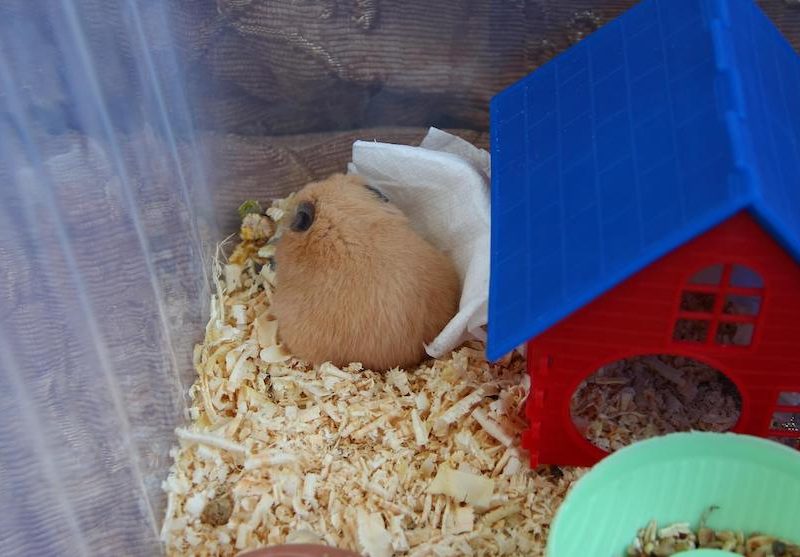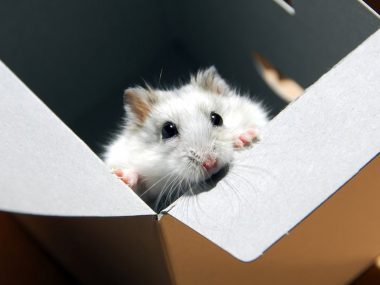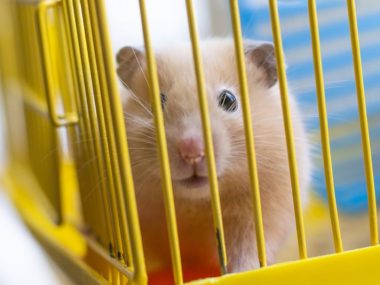Those little furry balls of joy we know as hamsters display an array of quirky behaviors. One of which may raise quite a bit of concern in unknowing, unsuspecting hamster parents. If you own a hamster or are entertaining the notion of getting one, you’ll be surprised not to know that not all hamsters hibernate.
Table of Contents
What Is Hibernation?
Hibernation is best defined as a “state” of deep sleep when a warm-blooded animal becomes dormant during wintertime. It is a means of self-preservation when the harsh conditions of winter make it difficult to find food and stay warm.
Most of us are very familiar with bears hibernating, but beyond that, we may not be aware that there are thousands of animals that hibernate. Some slumber in this deep state of sleep for days, while others may sleep as long as weeks, months, or even years!
Do Hamsters Hibernate?
Hamsters are a part of an enormous group of animal species that hibernate under certain conditions. Researchers discovered that hamsters kept in ideal conditions with a plentiful supply of food do not typically hibernate (i.e., pet hamsters.) Those living in the wild or exposed to harsh temperatures and lack of food may go dormant for the winter months.
Why and when do hamsters hibernate?
A published study (Biology and Diseases of Hamsters) mentions that hibernating behavior varies in different species of hamsters. When hamsters are exposed to cold temperatures (below 60F), and less light, they instinctively begin to gather and store food. This explains why you see squirrels gathering acorns in the fall. Not all hamsters hibernate and may succumb to hypothermia.
The British Hamster Association highlights that hamsters may also hibernate as a result of being isolated or under stress. This may support the opinion many hamster owners share that interaction with a pet hamster is necessary for its well-being. Additionally, stress caused by environmental factors (loud noise, too much light, incorrect handling, etc.) or illness may induce hibernation.
Another research article (Daily Torpor in Hamsters (Rodentia, Cricetinae) aptly explains how hamsters can decrease their body temperature (known as “torpor”) for short periods as a way to adapt to conserve energy during certain seasons. Their circadian system makes necessary changes within the neuroendocrine system for torpor to occur. A good example of how this occurs is comparing a wild hamster and one kept as a pet.
Those living in the wild will naturally hibernate with induced torpor because the shift in seasonal temperature tells them it’s getting colder, food will be scarce, it’s time to curl up in a warm spot and sleep until it warms up.
A pet hamster who is normally kept in a warm environment and fed regularly won’t hibernate UNLESS for some unfortunate reason they are not being fed, are sick or stressed, feel cold, or lonely/isolated.
Is Hibernation Time(s) Species-Specific?
Researchers (from the above-mentioned study: “Daily Torpor in Hamsters…”) studied six different species of hamsters to find out if hibernation varied in species or if it was the same in all. Their findings revealed not all species hibernate (in the wild) at the same time. For example, Roborovki hamsters hibernate from January to February, whereas a Winter White Dwarf hibernates from December to March.
According to “Biology and Diseases of Hamsters,” Syrian hamsters are rarely included in hibernation studies. Syrian hamster hibernation is unreliable because when they are exposed to harsh conditions such as cold temperatures, they randomly fail to hibernate.
And for those of you who own those adorable smaller-sized hamsters, we know you are probably wondering, “Do dwarf hamsters hibernate?” In the wild, they most likely do, but as a pet raised in a nurturing, ideal environment, they most likely won’t.
So, as you can see, hibernation differs among species and individual hamsters.

Sleeping vs. Hibernation
Hamsters are nocturnal and are notorious for being active in the evening and during the night. It’s not unusual for hamster owners to grow weary of hearing the hamster wheel churning throughout the night. They typically sleep during the daytime.
If you find that they are sleeping during the night, they may be hibernating because the room is too cold. It’s important to keep them warm once winter hits. Keeping their cage away from cold windows, drafts, exterior doors, air vents and providing them with plenty of food and bedding helps prevent hibernation.
Some hamster owners quickly assume that their hamster is dead because they cannot arouse them, and they appear to be lifeless. Because hibernation is not a natural occurrence that we as humans go through, seeing a lifeless hamster causes us to assume they are dead. Unfortunately, many hamsters are assumed dead when they are in hibernation.
How Do You Know If A Hamster Is Hibernating Or Dead?
This is a great question many hamster owners ask. If your hamster is left alone for long periods (days, weeks, etc.,) is kept in a cold area, or not fed, they will most likely hibernate (up to a week.) A live hamster will twitch its whiskers when the whiskers are touched, the cheek will be slightly warm, and the legs can be extended. If in doubt, consult with your veterinarian.
Can You Wake A Hamster From Hibernation?
Arousing a hibernating hamster requires patience. The best way is to allow them to naturally awaken. You can gently touch them, slowly raise the temperature in the room they are kept in and add light to the area. If they are abruptly aroused from their slumber, they may go back into hibernation.
“Waking The Sleeping Bear”
You may hear the popularly used cliche not to wake a sleeping bear. However, if you have a hibernating pet hamster, you may need to reassess its environment and needs. Remember that a long nap may not be hibernation.






